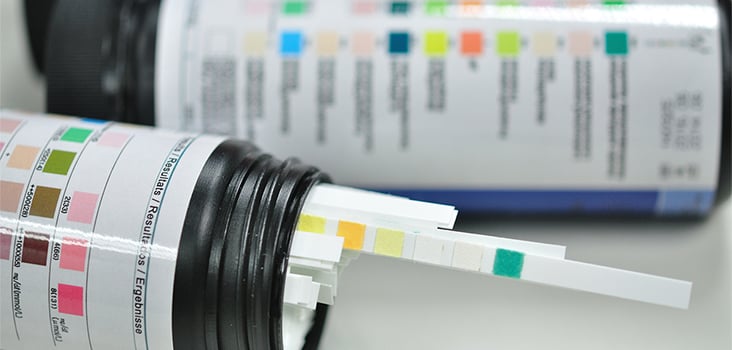
The Screenings That Will Keep Your Workforce Safe and Healthy
Keeping your employees safe and healthy begins before the job offer is signed, and continues throughout employment. Various tests and screenings help employers make the right hiring decisions, maintain compliance, prevent injuries, and improve employee health.
From proactive to reactive, here are some common screenings you should consider for your workforce.
Pre-Employment Screenings
Making sure that employees are fit for the job is one of the best ways to proactively improve workplace safety. And the ROI can be big. A 2003 study by Littleton found a cost savings of $18 per $1 spent on pre-employment screenings. But they need to be specific to the functions of your workforce.
Another important factor to consider with pre-employment screenings: they must comply with the American with Disabilities Act (ADA) and the Equal Employment Opportunity Commission (EEOC). Both the ADA and EEOC have strict rules about pre-employment screenings, such as screenings that are limited to specific situations to prevent discrimination, and functional tests given to every employee offered a job for that job title.
Below are some of the most common pre-employment screenings.
Human Performance Evaluations (HPEs)
A human performance evaluation (HPE) compares the physical abilities of a potential hire to the physical requirements of a job, determining whether the applicant can safely perform the essential job duties. An HPE typically includes a medical and occupational history review, a medical exam, and an evaluation of functional tasks, such as lifting, carrying, pushing, and pulling.
HPEs are ADA-compliant as long as they only test for things that would keep the potential hire from safely performing their job. By ensuring an employee can safely manage the physical aspects of a job, employers are able to reduce the risk of an injury.
Drug Screenings
Drug and alcohol abuse can lead to accidents and injuries in the workplace. Employees with substance abuse issues are less productive, miss more days of work, and are more likely to cause an accident. With pre-employment drug screenings, you can determine if a job applicant has substance abuse issues to help reduce the risk of an on-the-job injury from happening in the future. Often, if one of these potential applicants knows that a company performs drug testing, they are less likely to even apply for the job.
Post-Accident Screenings
In the unfortunate event that an accident occurs at work, you want to ensure that the injured employee is treated effectively and able to return to work safely. Post-accident screenings can help you determine the cause of the accident and test the employee’s physical ability to return to work. These types of screenings can include:
Drug Screenings
When there’s reasonable suspicion that drug or alcohol abuse caused a work-related accident, an employer is legally able to require a drug test for the injured employee. Workers’ compensation can be denied to employees whose accidents were the result of drug or alcohol abuse, so it’s important for employers to know the cause.
The Occupational Safety and Health Administration’s (OSHA’s) final rule on injury and illness tracking includes anti-retaliation provisions. These provisions say that employers can require blanket testing for all injuries – so long as there is reasonable suspicion. For example, it would not be reasonable to drug test an employee who reports a bee sting or repetitive strain injury.
Fitness-for-Duty Exams
Sometimes referred to as “return-to-work exams,” fitness-for-duty exams make sure that workers can safely perform the physical aspects of their jobs after recovery. These exams are more often used for labor-intensive roles, and they’re specific to each employer and position. A return-to-work exam depends on the employee’s role and their unique circumstances, but they typically include lifting heavy objects overhead or bending for prolonged periods of time.
Fitness-for-duty exams help employers know when their injured employee is ready to safely return to work without risking re-injury.
Medical Surveillance Exams
Dangerous working conditions are a fact of life in many industries. Whether it’s toxic chemicals, respirable silica, or extremes of temperature and noise, the right protective equipment—and the right medical exams—are essential to keep these workers safe and healthy. Medical surveillance exams are designed to do just that. They ensure regulatory compliance, enable quality control processes, and protect workers on the job.
There are several types of medical surveillance exams, but some of the most common are baseline surveillance exams and periodic surveillance exams for specific exposures (like crystalline silica). Both these exams make sure that the worker can perform that job safely and take into consideration their current health and health history, the exposure level at the job site, and personal protective equipment. Baseline surveillance exams are performed after hire and/or when an employee starts working in the applicable role, while periodic surveillance exams are performed periodically for quality control and monitoring.
As a leader in workplace health, Concentra has been creating comprehensive programs for employers for nearly 40 years. We know that health at work is about more than treating injuries. It’s supporting health in the workplace, maintaining expertise in the delivery of high-quality care to employees, and helping to minimize the impact on an employer’s business. It all adds up to improved care for employees, smarter solutions for employers, and enhanced outcomes for everyone.
If you’d like to keep your workforce safe and healthy with the appropriate employee screenings, contact one of Concentra’s workforce health experts.



